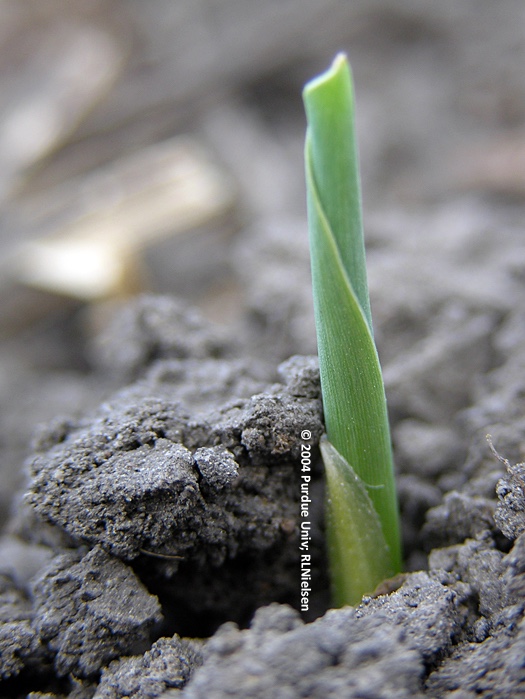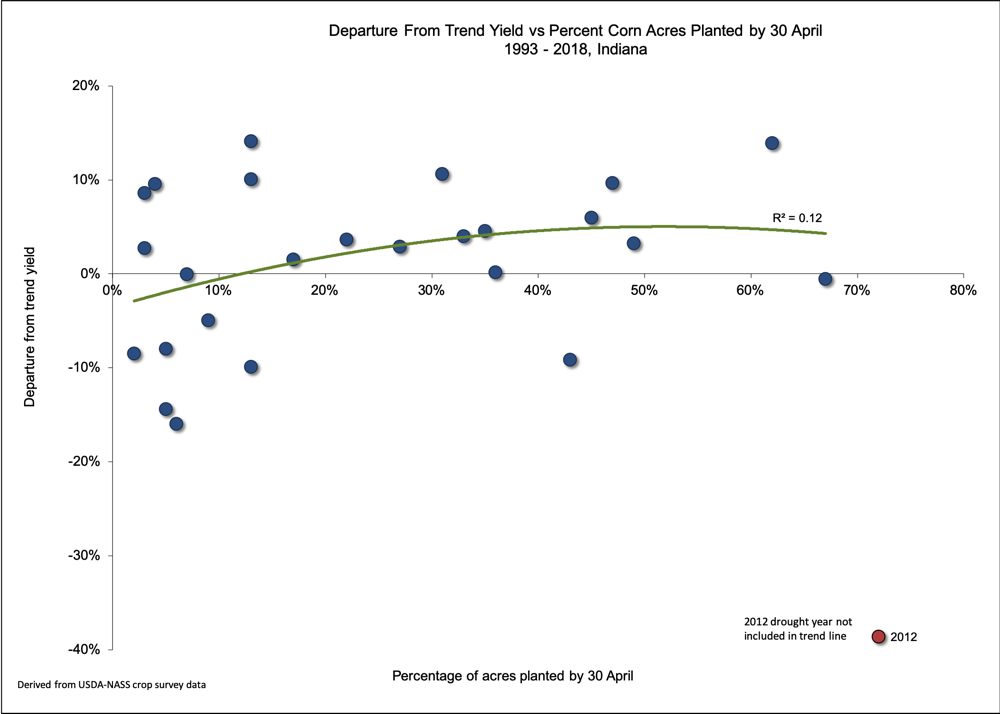Soils in Indiana have been too wet for field work almost since last fall. What I mean by “too wet” is so wet that the soils would not even support the weight of the field equipment without creating ruts or the equipment literally getting stuck.
436 articles tagged "Agronomy Tips".

Delayed planting seasons create a lot of frustrations for everyone involved with planting crops. One of the agronomic questions that comes up when planting is seriously delayed is whether farmers should consider switching from their normal full-season maturity hybrids to shorter-maturity hybrids. The question is based, of course, on the perceived risk of the crop not reaching physiological maturity before a killing fall freeze and the yield losses that could result. A related, and economic, concern with delayed planting of normal full-maturity hybrids is the risk of high grain moisture contents at harvest and the resulting costs incurred by artificial drying of the grain or price discounts by buyers. Bottom Line Delayed planting certainly reduces the growing season for corn, both in terms of calendar days but more importantly in terms of available GDDs for the plants to safely mature before a fall frost or killing freeze. The good news[Read More…]

The prospect of delayed planting of corn leads corn growers to consider whether changes in seeding rate should be made in response to late planting. The short answer is that optimum plant populations probably remain the same regardless of planting date.

Successful stand establishment of a corn crop relies on many factors, including the successful emergence of the seedlings in the first place. Seedling emergence occurs as a result of elongation of the mesocotyl that elevates the coleoptile or “spike” toward the soil surface.

Conventional wisdom says that the prime planting “window” to maximize corn yields in much of Indiana opens about April 20 and closes about May 10. This “window” typically opens about one week later across the northern tier of Indiana counties (later warmup) and about one week earlier across the southern tier of Indiana counties (earlier warmup).

Now that alfalfa has broken winter dormancy, it is time to assess the wellbeing of the crop. It is important to scout the entire field and not just one location as differences in soil types can change conclusions made about alfalfa health.
This report summarizes corn yield response to fertilizer nitrogen (N) rate in field scale trials conducted around the state of Indiana since 2006. These results are applicable to N management programs that use efficient methods and timings of N fertilizer application.
Results from 97 field scale trials around Indiana since 2008 suggest that maximum yield response to plant populations for 30-inch row corn grown under minimal to moderate stress conditions occurs at about 32,150 PLANTS per acre (ppa), equal to seeding rates of about 33,840 SEEDS per acre (spa).

Sulfur (S) deficiency is becoming more common in Indiana crops because S emissions from coal-fired power plants have decreased over the past few decades and, thus, so has atmospheric S deposition.

The Purdue Crop Performance Program (PCPP) annual Corn and Soybean Performance Trial Bulletin was recently posted online.


